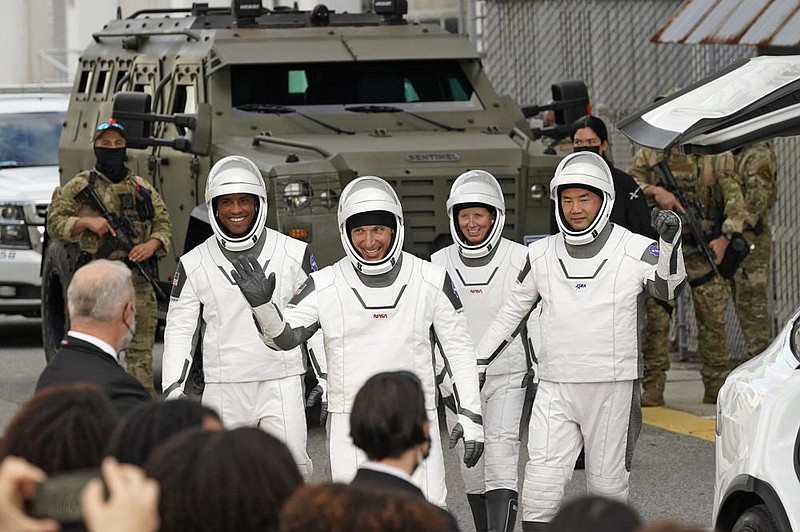CAPE CANAVERAL, Fla. — SpaceX launched four astronauts to the International Space Station on Sunday on the first full-fledged taxi flight for NASA by a private company.
The Falcon rocket thundered into the night from Kennedy Space Center with three Americans and one Japanese, the second crew to be launched by SpaceX. The Dragon capsule on top — named Resilience by its crew in light of this year’s many challenges, most notably covid-19 — was due to reach the space station today and remain there until spring.
[Video not showing up above? Click here to watch » https://www.youtube.com/watch?v=Dh3vWxb_2nk]
Sidelined by the virus himself, SpaceX founder and chief executive Elon Musk was forced to monitor the action from afar. He tweeted that he “most likely” had a moderate case of covid-19. NASA policy at Kennedy Space Center requires anyone testing positive for coronavirus to quarantine and remain isolated.
Sunday’s launch follows by just a few months SpaceX’s two-pilot test flight. It kicks off what NASA hopes will be a long series of crew rotations between the U.S. and the space station, after years of delay.
“This is another historic moment,” NASA Administrator Jim Bridenstine said Friday. But he noted: “Make no mistake: Vigilance is always required on every flight.”
The flight to the space station — 27 1/2 hours door to door — should be entirely automated, though the crew can take control if needed.
With covid-19 still surging, NASA continued the safety precautions put in place for SpaceX’s crew launch in May. The astronauts went into quarantine with their families in October. All launch personnel wore masks, and the number of guests at Kennedy was limited. Even the two astronauts on the first SpaceX crew flight stayed behind at Johnson Space Center in Houston.
Vice President Mike Pence, chairman of the National Space Council, traveled from Washington to watch the launch.
NASA worried a weekend liftoff — coupled with a dramatic nighttime launch — could lead to a superspreader event. They urged the crowds to wear masks and maintain safe distances. Similar pleas for SpaceX’s first crew launch on May 30 went unheeded.
The three-men, one-woman crew led by Commander Mike Hopkins, an Air Force colonel, named their capsule Resilience in a nod not only to the pandemic but also to racial injustice and contentious politics. It’s about as diverse as space crews come, including physicist Shannon Walker, Navy Cmdr. Victor Glover, the first Black astronaut on a longterm space station mission, and Japan’s Soichi Noguchi, who became the first person in almost 40 years to launch on three types of spacecraft.
They rode out to the launch pad in Teslas — another Musk company — after exchanging high-fives and hand embraces with their children and spouses. Musk was replaced by SpaceX President Gwynne Shotwell in bidding the astronauts farewell.
[Gallery not loading above? Click here for more photos » arkansasonline.com/1116falcon9/]
Besides its sleek design and high-tech features, the Dragon capsule is quite spacious — it can carry up to seven people. Previous space capsules have launched with no more than three. The extra room in the capsule was used for science experiments and supplies.
The four astronauts will be joining two Russians and one American who flew to the space station last month from Kazakhstan.
The first-stage booster — aiming for an ocean platform several minutes after liftoff — is expected to be recycled by SpaceX for the next crew launch. That’s currently targeted for the end of March which would set up the newly-launched astronauts for a return to Earth in April. SpaceX would launch yet another crew in late summer or early fall.
NASA turned to private companies to haul cargo and crew to the space station after the shuttle fleet retired in 2011. SpaceX qualified for both. With Kennedy back in astronaut-launching action, NASA can stop buying seats on Russian Soyuz rockets. The last one cost $90 million.
VIDEO ONLINE
SpaceX launches mission to space station
arkansasonline.com/1116spacex/

